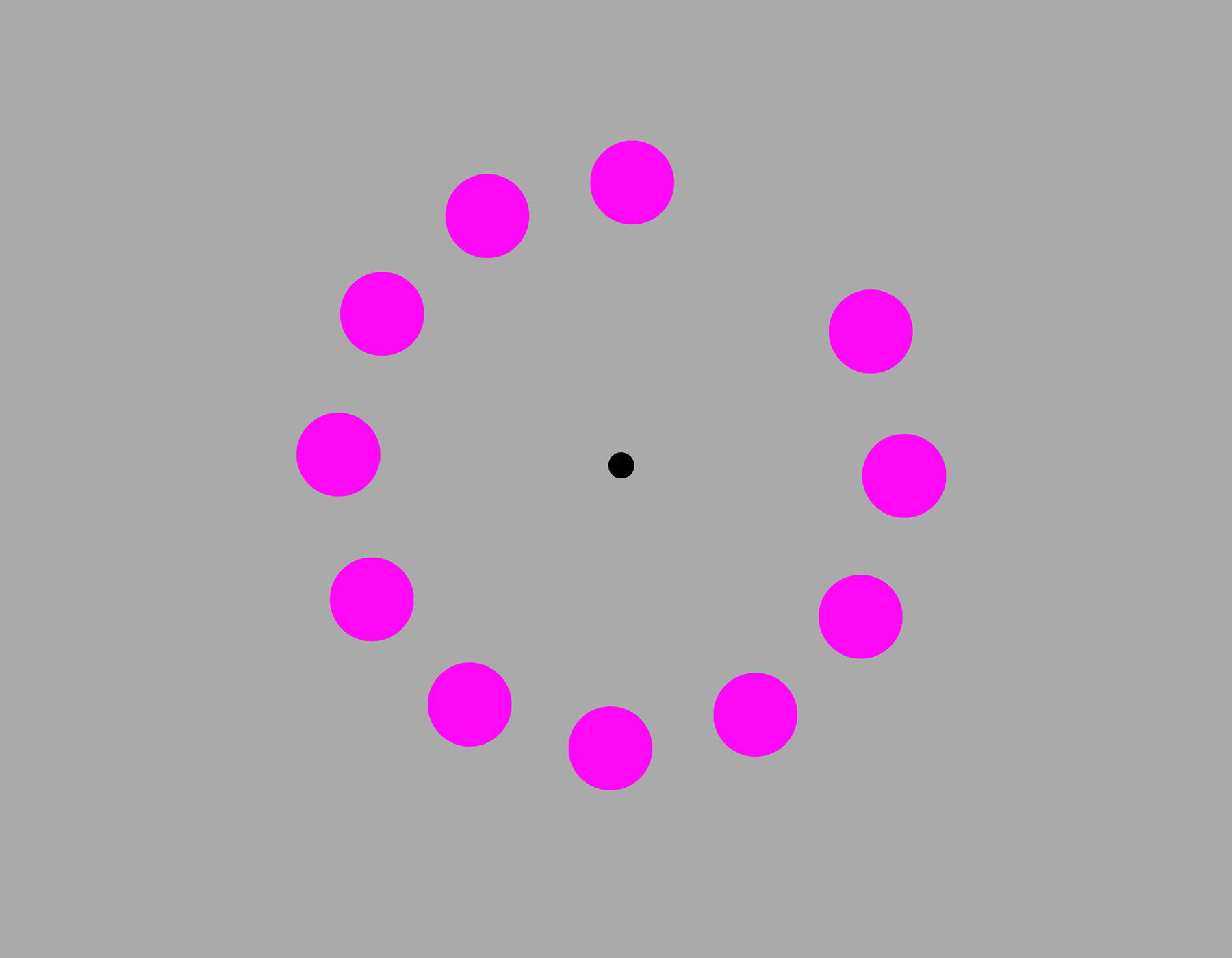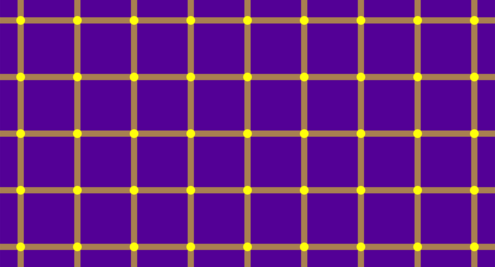
Stare directly at the black dot in the center. What color dot do you see traveling around in a circle?

The longer you focus on the small black dot, the more likely you are to see flashes of green.
But there is no green in the picture. The pink dots quickly disappear and reappear one by one. So why do you see green?
Your eyes detect color using light-sensing cells called cones. Humans have three different types of cone cells that work together to detect a range of colors. When you look at the same color for a while—in this case, the pink dots—some of your cone cells become fatigued, or tired. So, they stop responding. (Don’t worry—it’s only temporary!)
When a pink dot disappears, your eyes take a moment to adjust. In that moment, you see what’s known as an afterimage. Here, the afterimage is green because the cone cells that stopped responding are not needed to see green.
But why do cone cells in your eyes become fatigued to begin with? It’s important for survival. Ignoring a constant color allows your brain to focus instead on colors that are changing, and these are usually more important. It’s one more adaptation that helps you notice changes in your environment so you can respond as quickly as possible.
Move your eyes around the image. Can your eyes catch the flashing dots?

Did you try to chase the flashing dots? They’re not really there!
If you stare directly at a flashing dot, it will disappear. So, why do you see them? One theory says it has to do with how your eyes process light.
The yellow lines in the grid are surrounded by dark blue. The contrast makes it easy to see them. But if you look closely at the yellow discs, you’ll see that they are surrounded by yellow. The arrangement confuses light receptors in your eyes, making you see dark spots that aren’t there.
Why did your visual system evolve to be better at detecting light when it is surrounded by darkness? This makes edges stand out so that you can quickly identify objects in your surroundings—an important survival skill!
Image Credits:
©AMNH.




 Biodiversity
Biodiversity
 Brain
Brain
 Genetics
Genetics
 Marine BiOLogy
Marine BiOLogy
 MicrobiOLogy
MicrobiOLogy
 PaleontOLogy
PaleontOLogy
 ZoOLogy
ZoOLogy
 AnthropOLogy
AnthropOLogy
 ArchaeOLogy
ArchaeOLogy
 Astronomy
Astronomy
 Climate Change
Climate Change
 Earth
Earth
 Physics
Physics
 Water
Water

